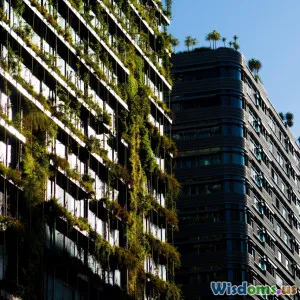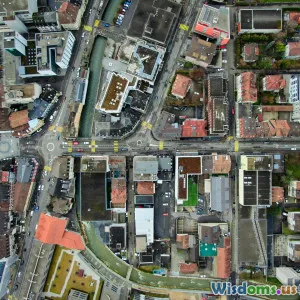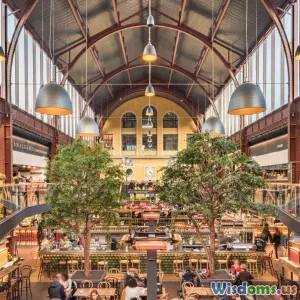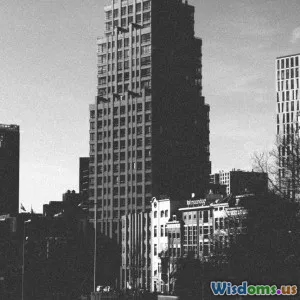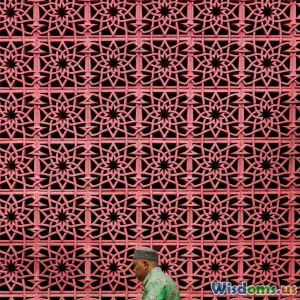
The Impact of Urban Design on Well being
8 min read Explore how thoughtful urban design shapes our health, happiness, and social wellbeing in cities worldwide. (0 Reviews)
The Impact of Urban Design on Wellbeing
Introduction
Imagine stepping outside your door into a city street that bursts with greenery, accessible parks, cozy cafes, and safe pedestrian zones. How does that feel? Calm? Inviting? Energizing? Urban design—the art and science of shaping cities—has a profound influence not only on aesthetics but on our mental and physical wellbeing. As the global population increasingly urbanizes (with over 56% living in cities as of 2023, according to the UN), understanding this impact has never been more critical.
This article delves deeply into the multifaceted relationship between urban design and our wellbeing. We will unpack how elements like green spaces, walkability, public transport, and community engagement shape the environment around us and directly influence health, happiness, and social cohesion.
The Connection Between Urban Design and Physical Health
Walkability and Active Living
Urban design that prioritizes walkable neighborhoods has been linked to increased physical activity among residents. The concept of walkability involves making streets safe, accessible, and pleasant for pedestrians. Cities like Copenhagen and Amsterdam are prototypical examples where integrated, pedestrian-focused design encourages cycling and walking as part of daily life, reducing reliance on cars.
Data Insight: A 2015 study published in the American Journal of Preventive Medicine found that residents in highly walkable neighborhoods were 35% more likely to meet physical activity guidelines.
Access to Green Spaces
Green spaces—from parks to urban forests—play a critical role in encouraging exercise, reducing air pollution, and providing restorative environments. Research from the University of Exeter found that just 120 minutes a week of exposure to nature can lead to significant improvements in health and wellbeing.
For example, New York City’s transformation of the High Line—a disused elevated railway into a public green promenade—not only revitalized a neighborhood economically but enhanced residents’ access to nature and outdoor activity.
Air Quality and Urban Heat Islands
Design strategies that increase vegetation, reduce vehicle emissions, and promote permeable surfaces help mitigate urban heat island effects and air pollution—both detrimental to respiratory and cardiovascular health. Singapore’s ‘City in a Garden’ approach uses trees and green roofs extensively as cooling mechanisms and natural air filters.
Mental Health Benefits of Thoughtful Urban Planning
The Psychological Impact of Space and Light
Natural light, open spaces, and views of greenery are proven to reduce stress and boost mood. Studies noted in the Journal of Environmental Psychology demonstrate that people exposed to natural or designed aesthetic environments report lower cortisol levels, a key stress hormone.
Architectural design that lets in daylight and incorporates biophilic elements (design that connects people with nature) within urban dwellings can counteract the mental strain common in dense cities.
Reducing Isolation Through Socially Designed Spaces
Public plazas, community gardens, and mixed-use developments foster social interactions. Jane Jacobs, a pioneering urbanist, stressed the value of "eyes on the street"—passive surveillance through vibrant, active street life that enhances safety and community trust.
Examples like Barcelona’s superblocks reconfigure parts of the city to prioritize pedestrians and community interaction while reducing traffic. Residents report higher satisfaction and lower feelings of loneliness after such changes.
Social Wellbeing and Equity in Urban Design
Inclusivity and Access for All
Urban design shapes equity by determining who has access to amenities, transport, and services. The concept of the '15-minute city,' popularized by urban theorists like Carlos Moreno, aims to provide all essential services within a 15-minute walk or cycle, ensuring accessibility for all demographics including the elderly and differently-abled.
Paris, a leader in adopting 15-minute city principles, is reducing car dependency and boosting local economies while making neighborhoods more inclusive.
Resilience and Community Empowerment
Community involvement in planning decisions increases a sense of ownership and social capital. Participatory design processes empower residents and create spaces tailored to diverse needs, from cultural programming to safety features.
For instance, Medellín, Colombia, transformed from a violent city to one of the Latin America's most innovative urban areas by incorporating community-led design that melded transport, social programs, and public spaces.
Environmental Sustainability and Wellbeing
Sustainable urban design not only helps the planet but directly promotes human wellbeing. Eco-friendly infrastructures like green buildings, renewable energy integration, and zero-waste systems reduce environmental stressors.
Case Study: Freiburg, Germany, is a leading eco-city that utilizes green architecture, solar energy, and extensive cycling infrastructure. Studies show it improves residents’ quality of life by fostering a connection to nature alongside minimizing pollution and noise.
Conclusion
Urban design is far more than shaping skylines or managing traffic—it is a foundational determinant of human wellbeing. By creating cities that are walkable, green, inclusive, and socially vibrant, we foster healthier bodies, calm minds, and thriving communities.
As we face challenges like climate change, social fragmentation, and public health crises, investing in thoughtful urban design becomes a powerful strategy for a better future. Whether you’re an architect, planner, policymaker, or citizen, understanding these dynamics and advocating for wellbeing-centric design can transform how we live and feel in our cities.
The cities we create today shape the health and happiness of generations to come.
References
- United Nations, World Urbanization Prospects 2023
- American Journal of Preventive Medicine, 2015: Walkability and Health
- University of Exeter, Health and Nature Study
- Journal of Environmental Psychology
- Carlos Moreno on the 15-Minute City Concept
- Case studies: New York High Line, Barcelona Superblocks, Medellín Innovation Project, Freiburg Eco-city
Rate the Post
User Reviews
Popular Posts










